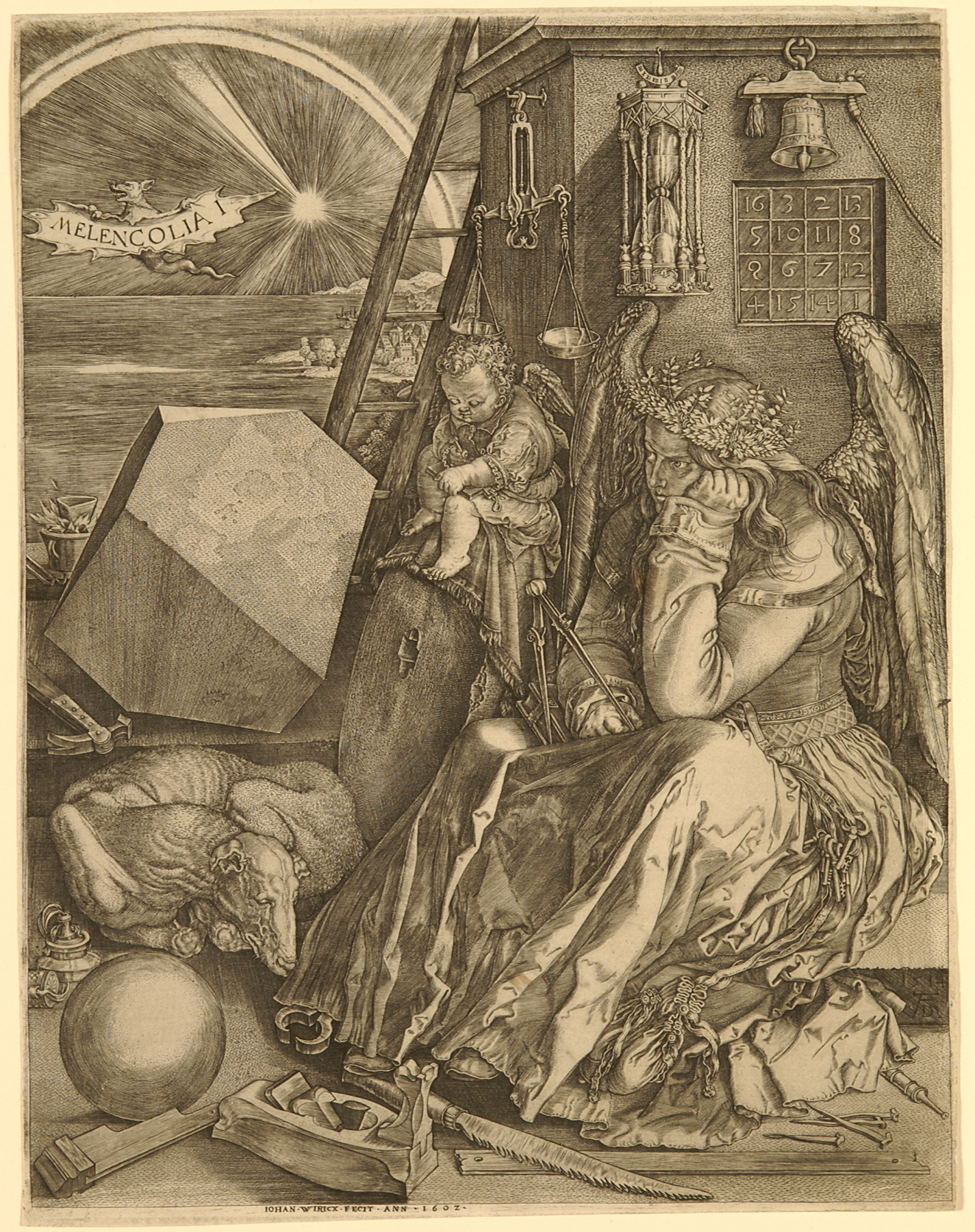Melencolia, Albrecht Dürer; Johan Wierix
Artwork Overview
Albrecht Dürer, artist
1471–1528
Johan Wierix, artist
1549–1615
Melencolia,
1602
Where object was made: Southern Netherlands (present-day Belgium)
Material/technique: laid paper; engraving
Dimensions:
Image Dimensions Height/Width (Height x Width): 242 x 182 mm
Sheet/Paper Dimensions (Height x Width): 242 x 182 mm
Sheet/Paper Dimensions (Height x Width): 9 1/2 x 7 3/16 in
Mat Dimensions (Height x Width): 19 x 14 in
Image Dimensions Height/Width (Height x Width): 242 x 182 mm
Sheet/Paper Dimensions (Height x Width): 242 x 182 mm
Sheet/Paper Dimensions (Height x Width): 9 1/2 x 7 3/16 in
Mat Dimensions (Height x Width): 19 x 14 in
Credit line: Museum purchase: Mark and Bette Morris Family Foundation
Accession number: 1999.0087
Not on display
If you wish to reproduce this image, please submit an image request



